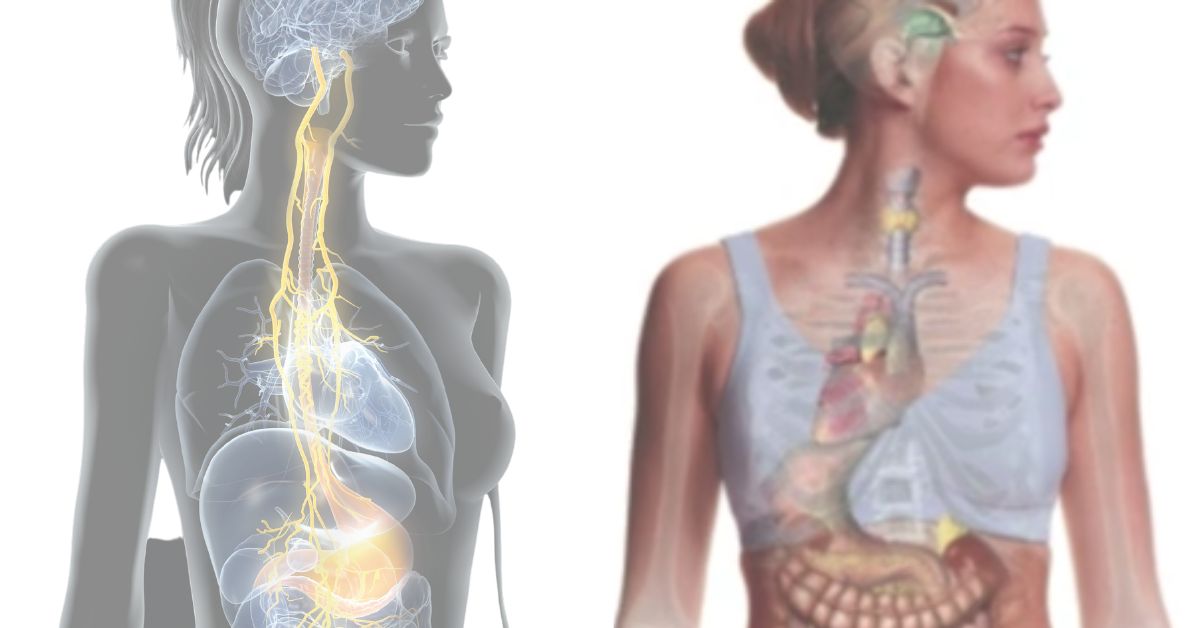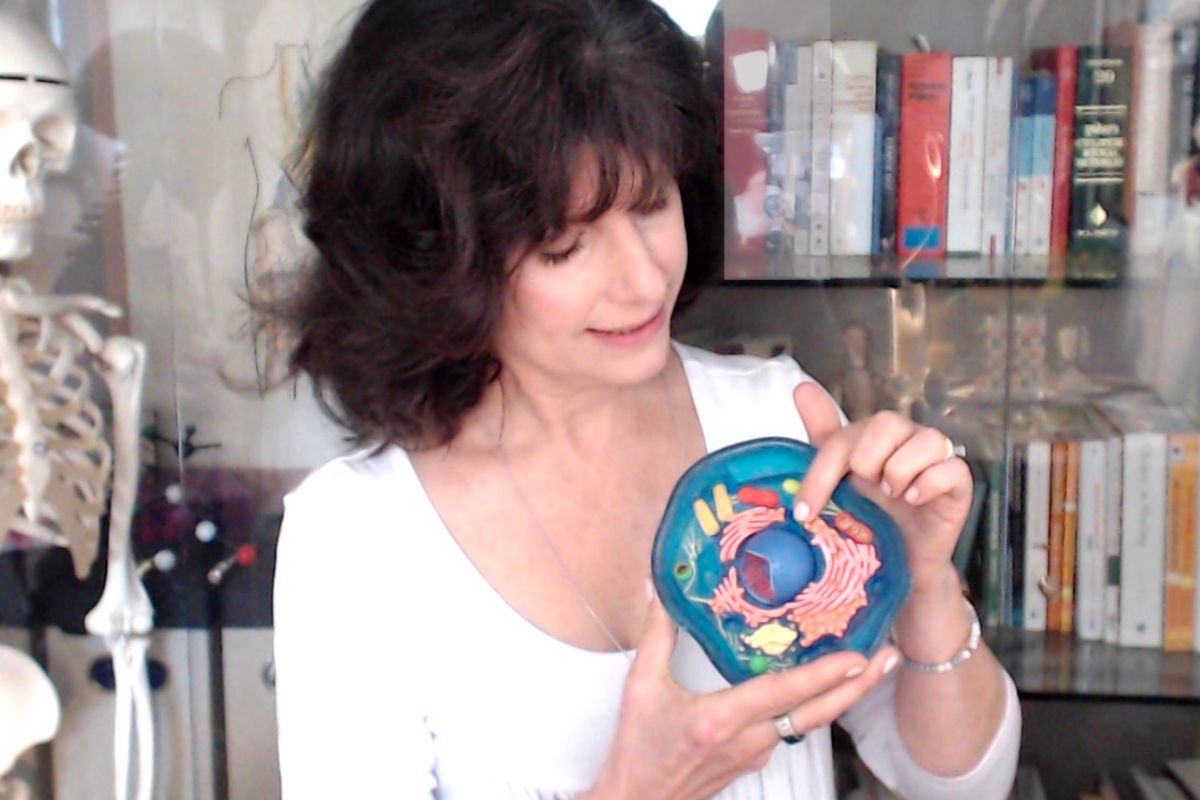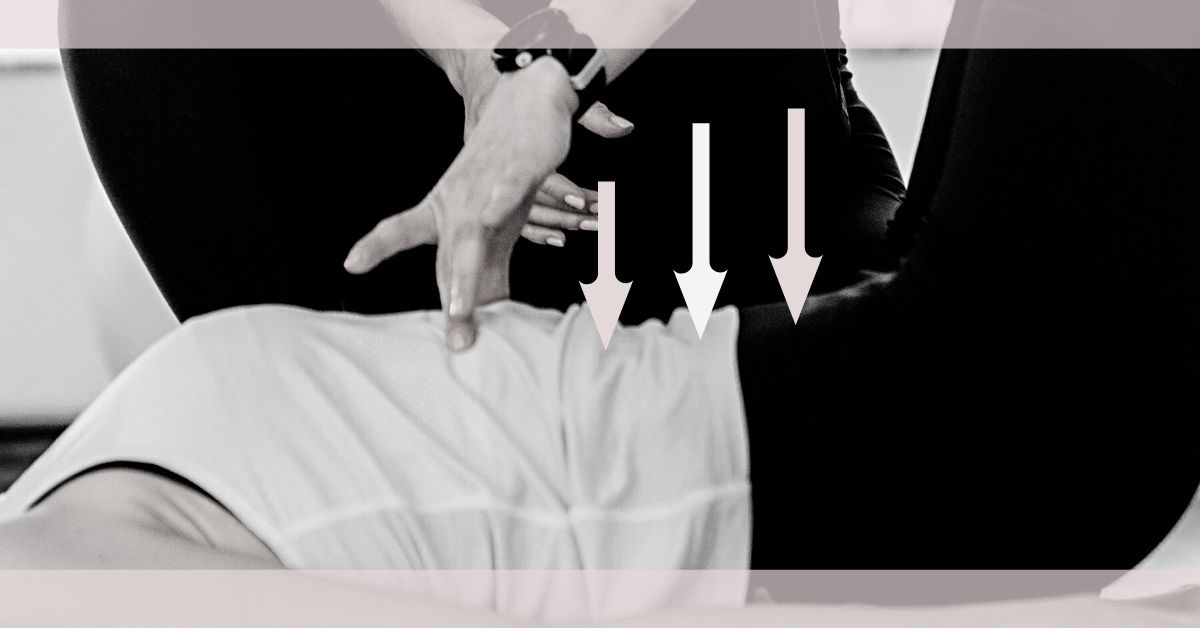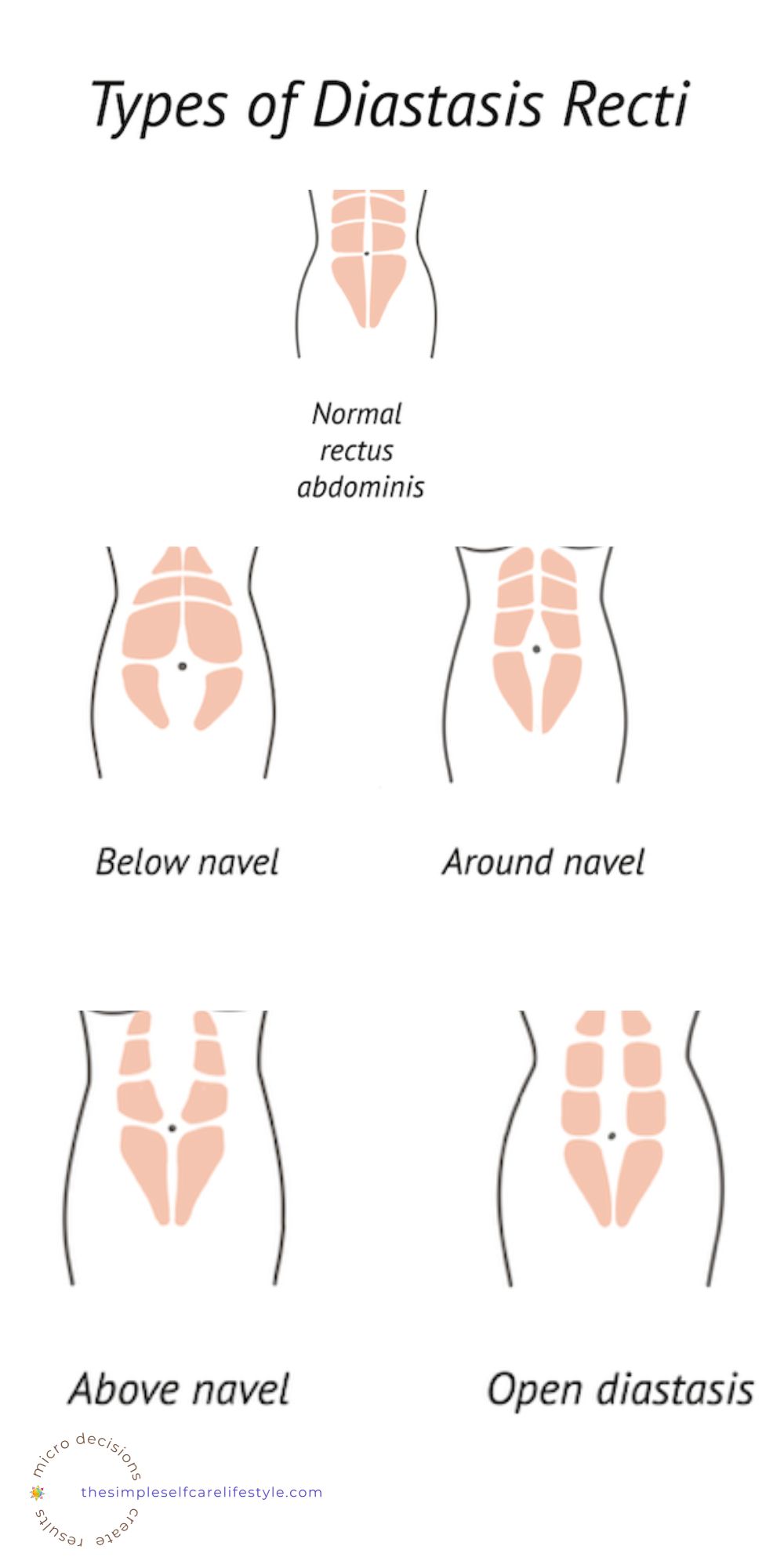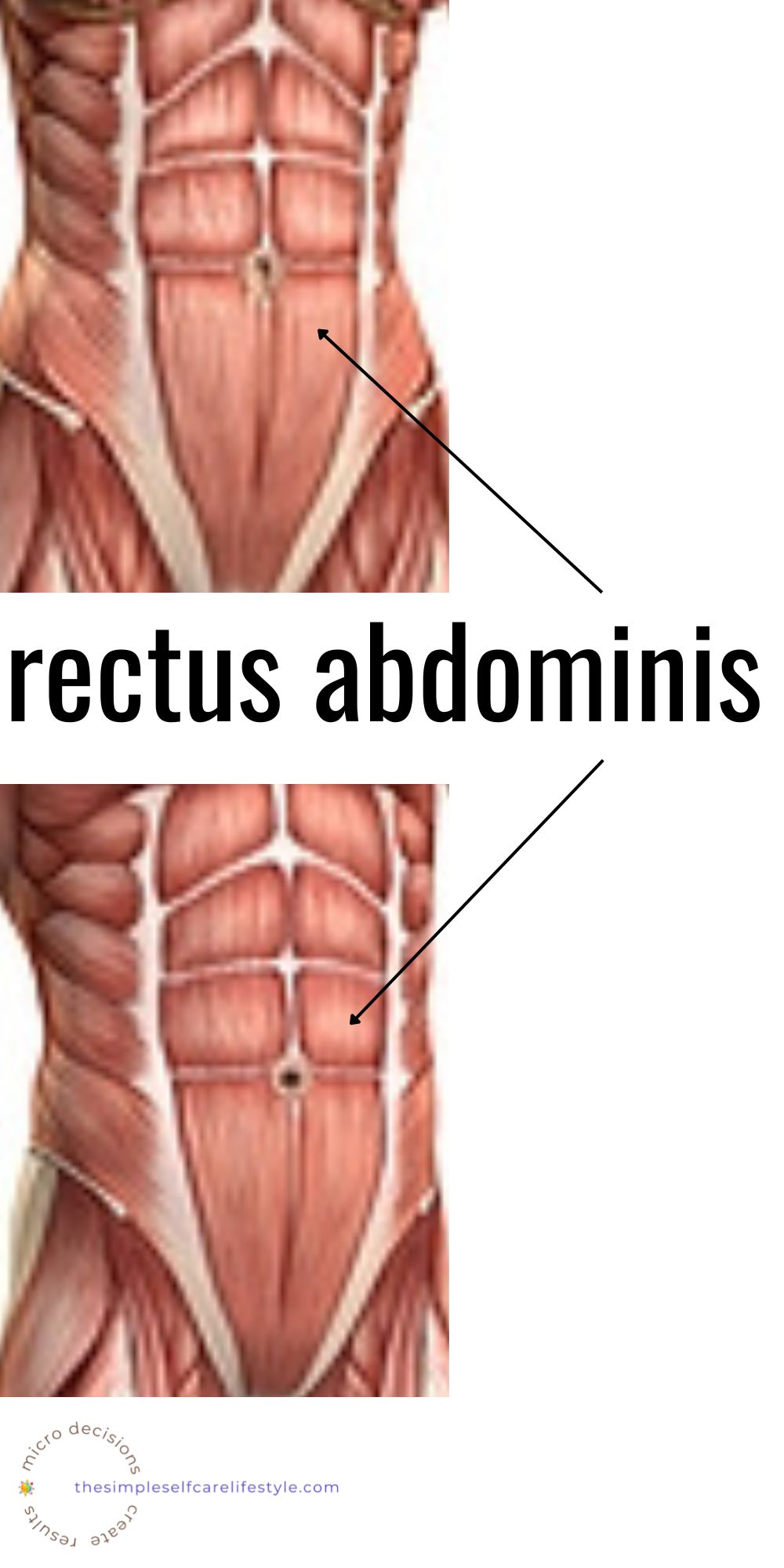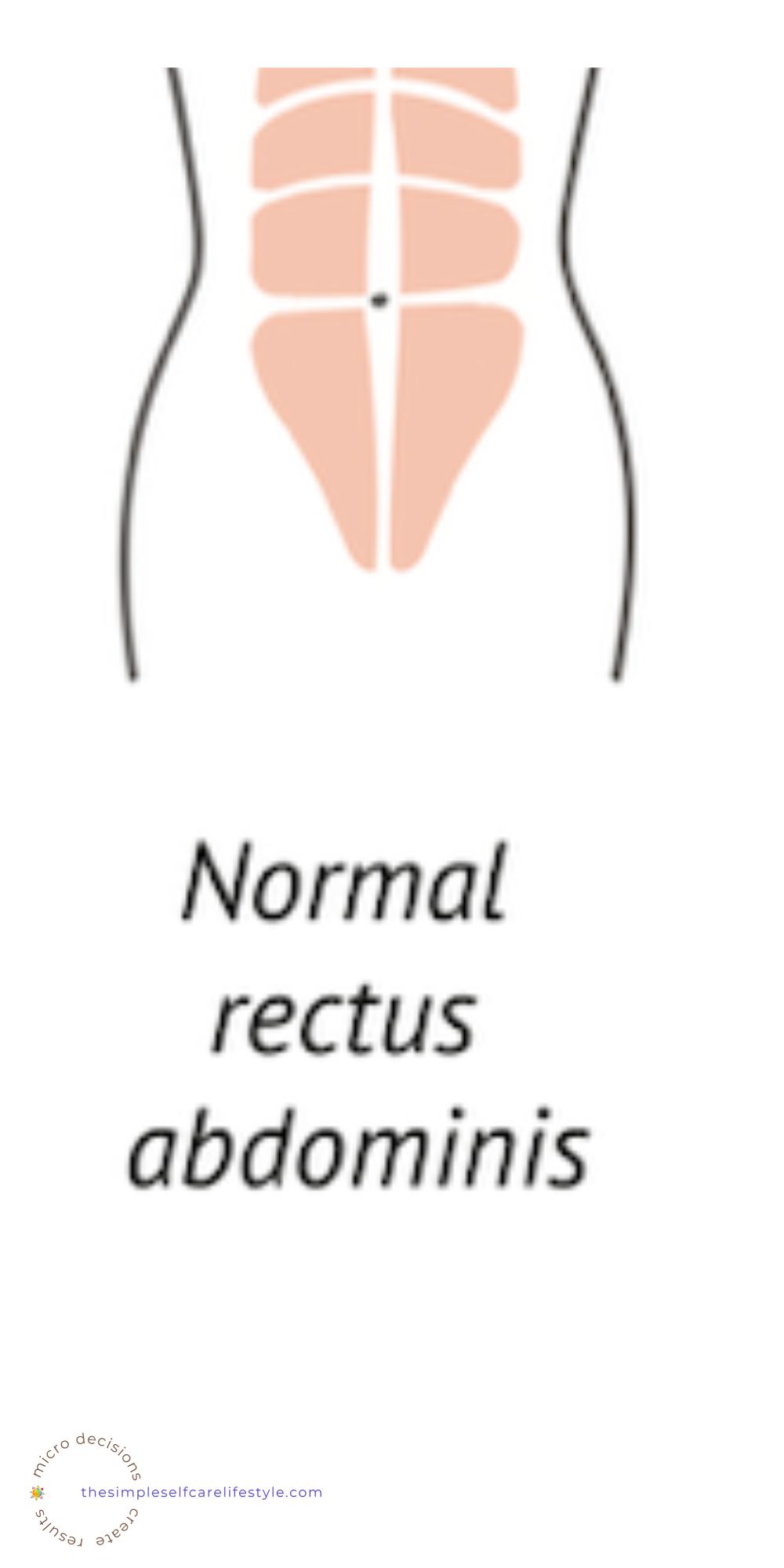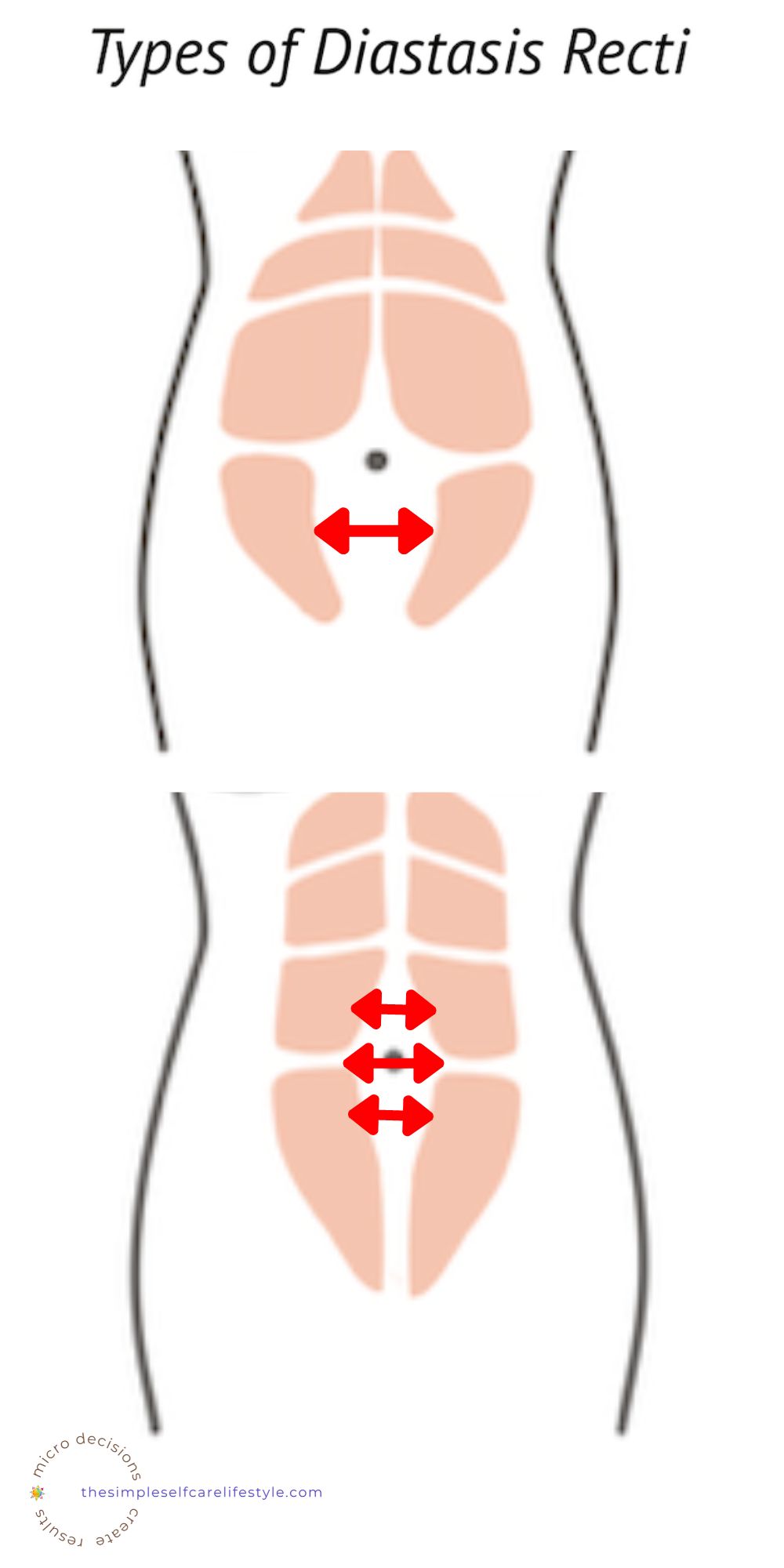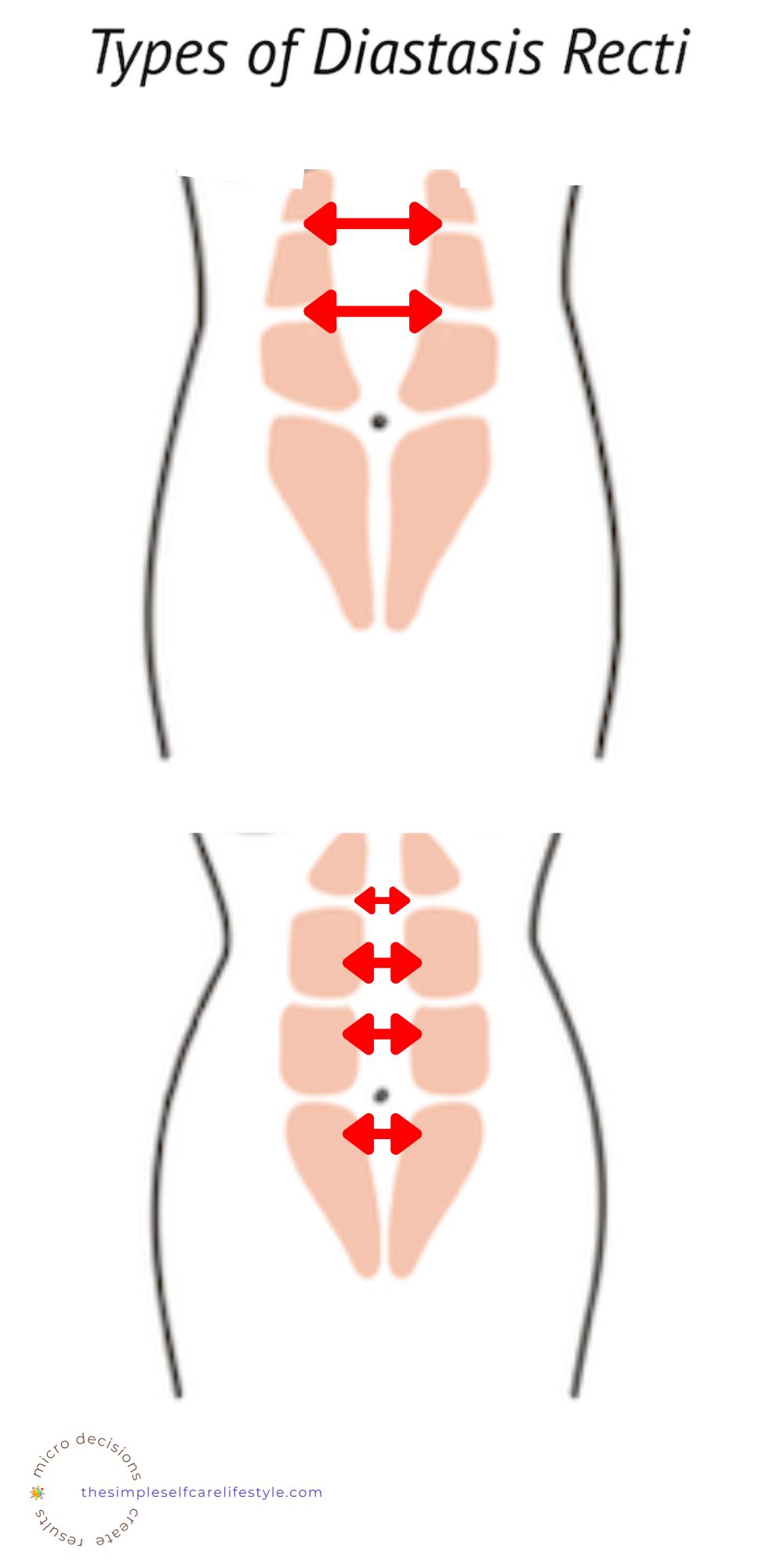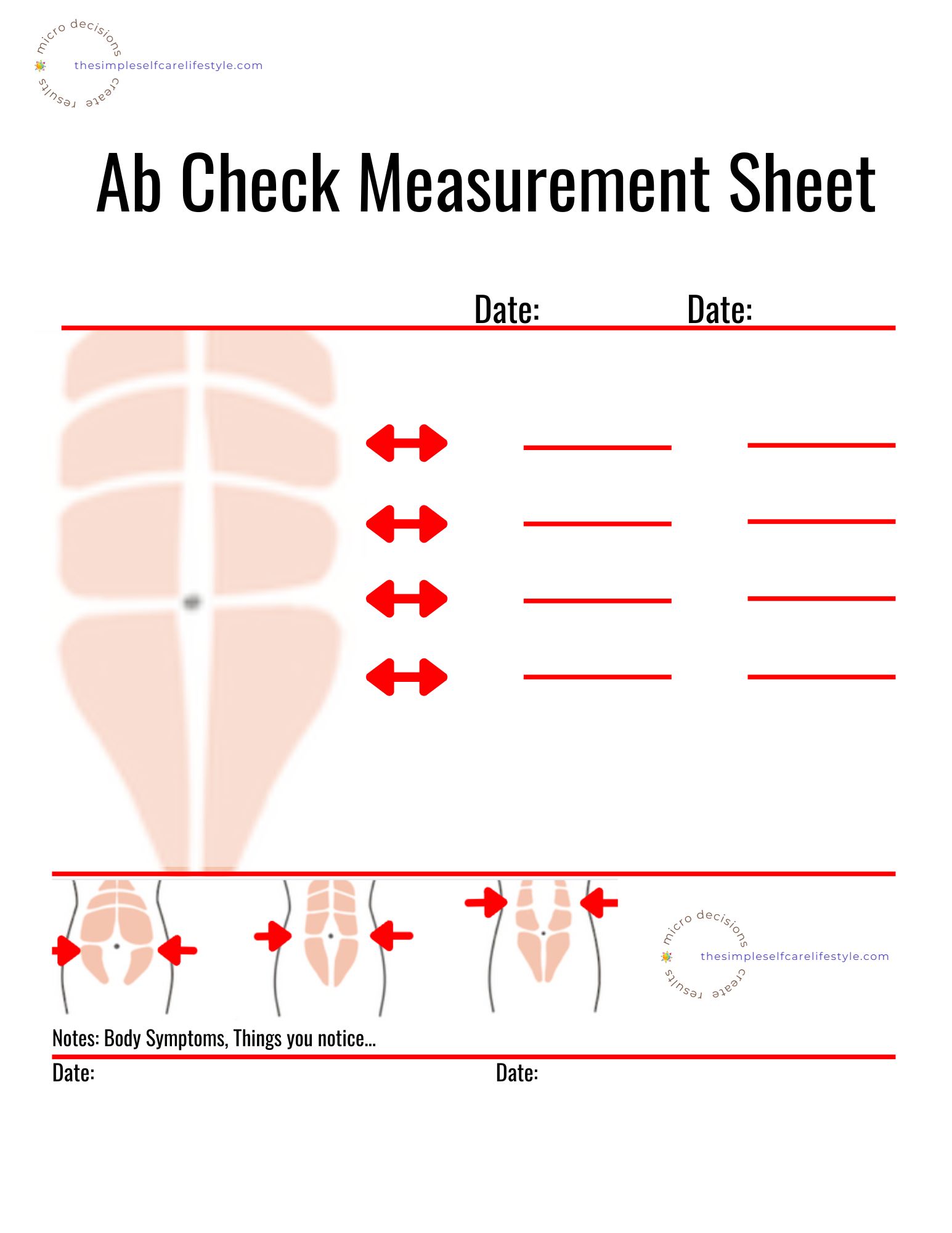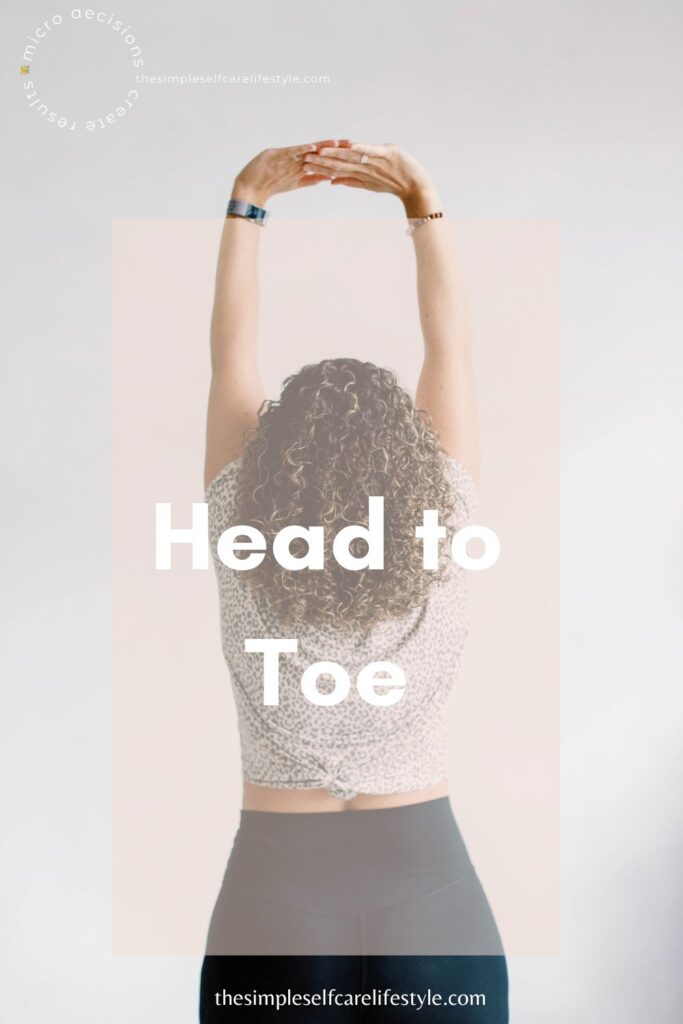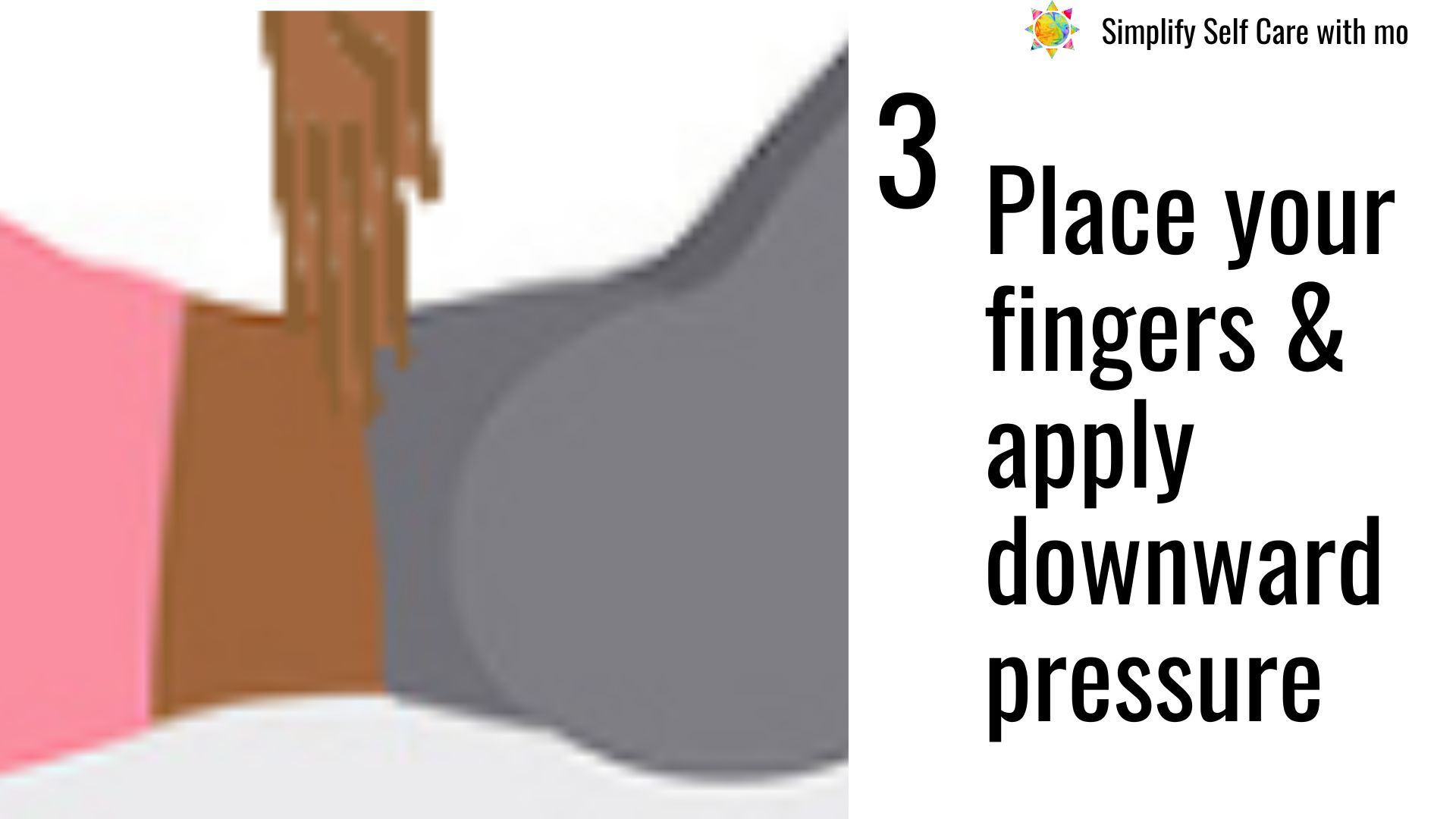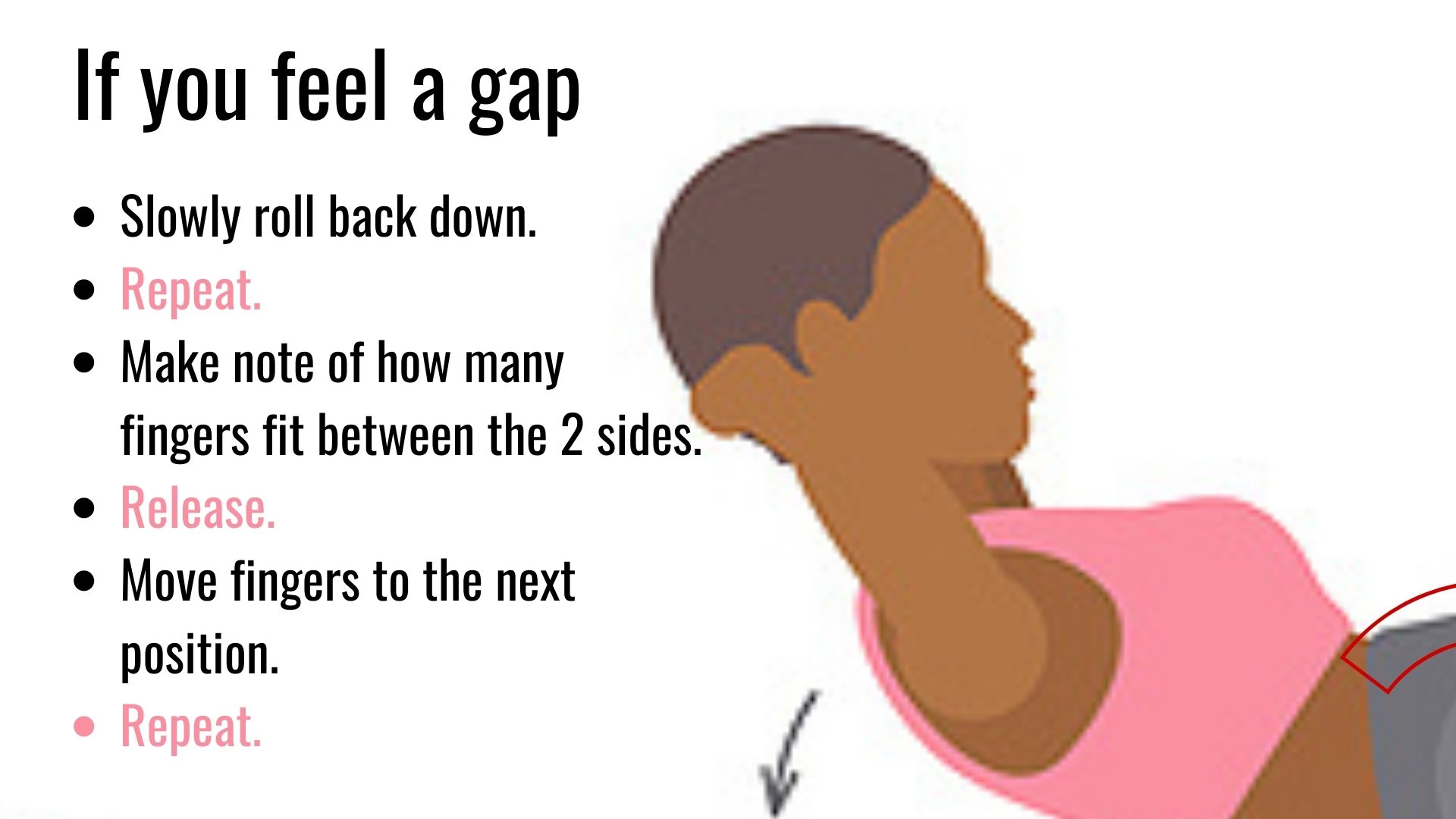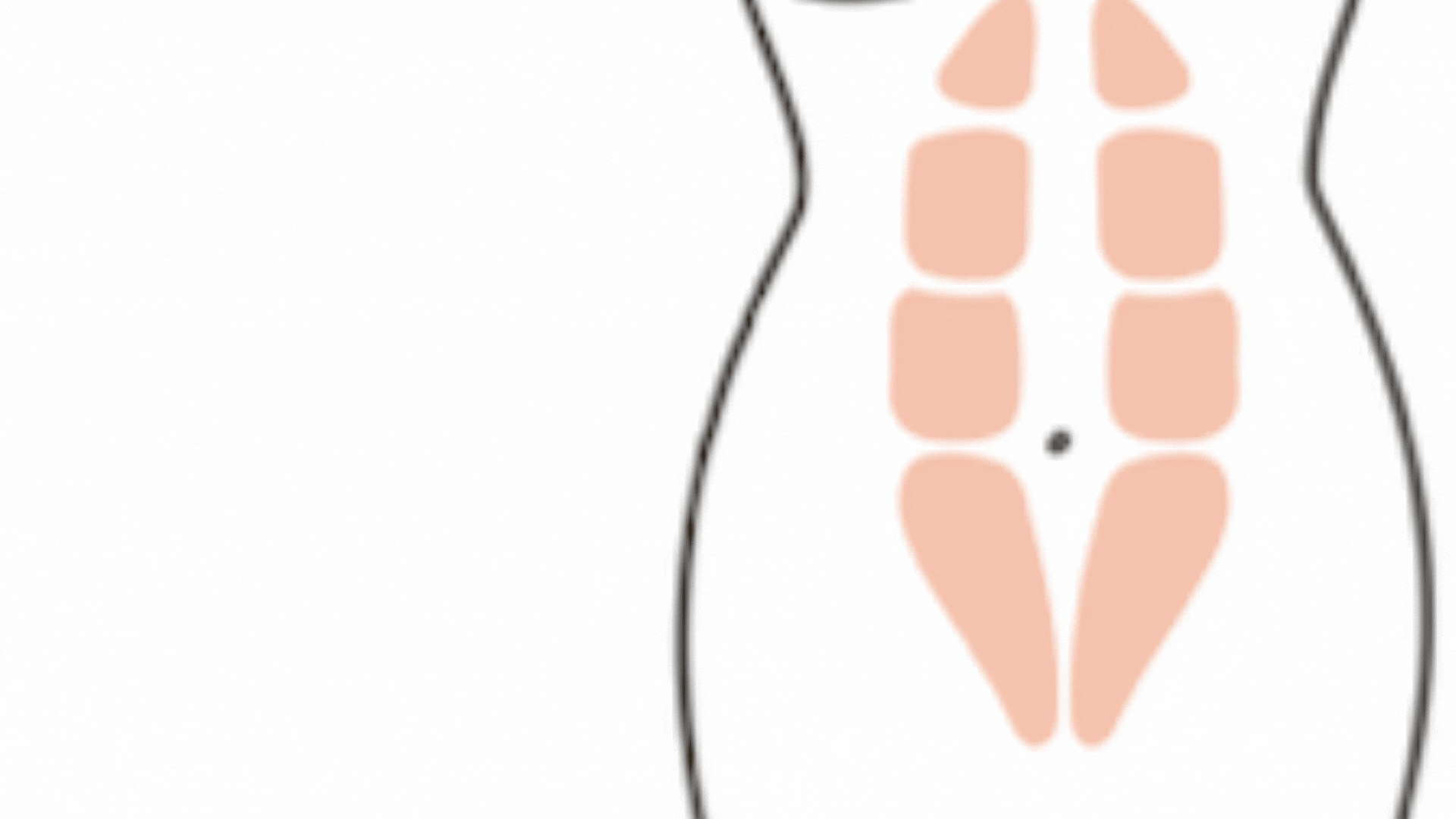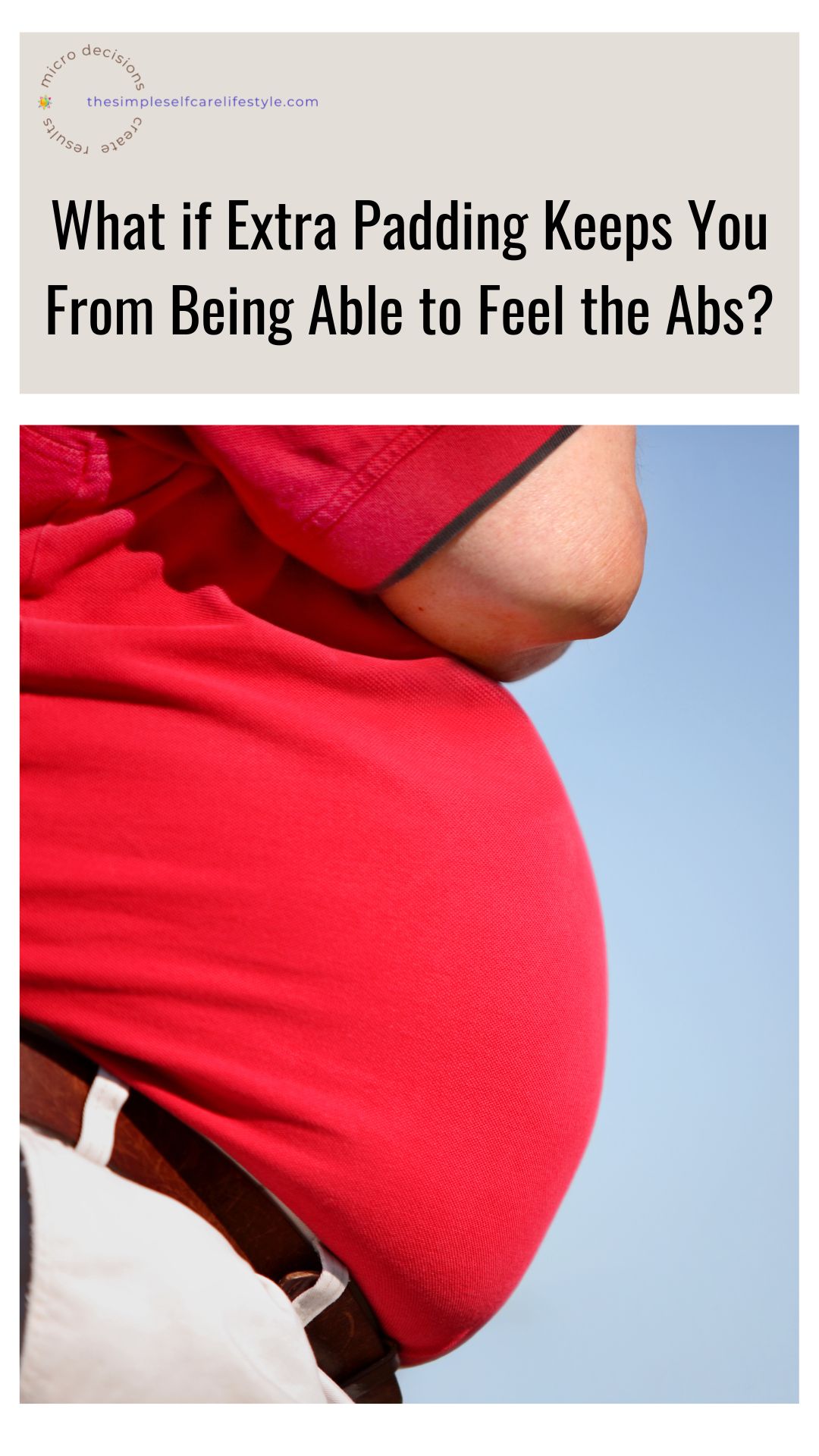AB Separation: What is it, Who Gets it, How to Check for it.
Ab Separation, many of us have it and do not know it!
An ab separation may contribute to the following:
Knee issues
Hip issues
Discomfort when lifting objects
For Women, Prolapse of the uterus, bladder, and rectum (2)
These are just a few symptoms an ab separation can be a part of.
Having an easy way to check is a simple self care tool. So let’s jump into:
AB separations:
The ‘common’ types.
Who has them.
Answering: Wouldn’t I know if I had one?
When and how often to check.
HOW to check for the different ab separations.
Plus links to:
✍️ It is common for me to receive a few questions about ab separation each month, so I chose 2 inquiries that cover the typical ab separation questions.
One inquiry is from a YouTube subscriber, and the other is from an email subscriber.

Q: mo, how do I check my AB separation? And, what should (and shouldn’t) I be doing so I can fix it? Plus, can my husband have a separation, or is it only females? Thanks~ M.T.
Q: Hi, does the exercise for the belly pooch apply to those who have diastasis recti abdominis?
A: M.T and Sophia, these are fantastic questions that can help others because an ab separation is something many of us have.
Answering Sophia’s exercise question first:
Yes, the exercise for a belly pooch is one of the exercises that can be very helpful.
M.T., your husband CAN have an AB Separation. As a matter of fact:
- Women
- Men
- Young
- Old
- Weekend Athletes
- Top-level athletes and
- Couch potatoes can have ab separations
And unfortunately, recent research indicates that every year more and more children are experiencing ab separations! (1)
Identifying an Ab Separation
Knowing what an ab separation is helps you identify them when you are checking.
It also helps make sense of why certain exercises/movements are helpful (or hurtful).
If you are a practitioner- having your clients check for an ab separation is an amazing tool. Many aches and pains that seem to ‘randomly’ occur throughout a client’s body may be due to an ab separation.
For practitioners who physically train clients, I always encourage checking for ab separations as part of your foundational intake.
Let’s dive into:
- What is an AB separation?
- Common circumstances that create them. (Who gets them)
- A SIMPLE Check &Tracking sheet for you.
What is an AB Separation (diastasis recti)? & The Different Types.
An ab separation is a gap between the left and right sides of the rectus abdominis muscle. (Diastasis Recti Muscle)
When we talk about an ‘ab separation,’ we are referring to the rectus abdominal muscle.
It is the most superficial muscle of our abs.
‘Superficial’ simply means they are the top layer of muscles. We can feel them running up and down the front of our torso. The rectus abdominis runs from our ribs down to our pelvis.
They are directly beneath our abdominal fat stores.
Looking at some ‘common’ Types of Diastasis Recti (Ab Separation), we revisit the image where we see the top illustration labeled ‘normal‘ (no separation).
Below the ‘normal’ illustration are four ‘common’ ab separation types.
It is good to know that there are a variety of ‘common’ ab separation types because it helps explain the different impacts an ab separation can have from one person to the next.
Let’s zoom in a bit closer.
Normal Rectus Abdominis
Zeroing in on the first illustration of the rectus abdominis.
There is a left side, a right side, and a line (of connective tissue) down the middle.
Four Common Separations
The four illustrations below show ‘common’ separations.
The first separation is below the belly button,
Beneath that is an ab separation that is around the belly button.
Ab separations can be located above the belly button as well,
Then there is a separation labeled open separation, which is a gap traveling much of the length of the muscle.
Who Can Have an Ab Separation?
Everyone. Young, old, males, females, weekend athletes, high-level athletes, and those who are unfit, including children.
Each can experience ab separation(s) for different and even multiple reasons.
Circumstances that Promote Ab Separations
A few circumstances that may promote ab separations:
- Pregnancy
- Post Pregnancy
- Excess weight
- Heavy Lifting
- Workout training that far exceeds the muscles strength
- Lack of exercise
- Aging
Pregnancy ab separation:
The body is expanding to accommodate the baby. The pressure coming from the inside presses on the ab muscles.
While this expansion during pregnancy is expected and normal, at times, the excessive stretching can create a separation that does not easily return to pre-pregnancy status.
Knowing how to:
- check for and
- identify a separation, along with
- clarity on what steps to take post pregnancy
is the key to effectively closing ab separation. (3) (4)(5)(6)(7)
POST pregnancy & lingering separations
At post-delivery appointments, many women are checked for separation around their belly button and cleared for exercise or to ‘resume’ pre-pregnancy activities.
Unfortunately, due to ongoing hormonal fluctuations, carrying their little one around (who day by day is getting heavier and bigger), along with the car seats, slings, etc.…ab separations that were on their way to healing begin to worsen.
And this is confusing.
Many moms unnecessarily experience a variety of aches, pains, and even injuries throughout their bodies, and they do not know to work on their abs in a way that will help because they are under the impression their abs are ‘back’ to ‘normal’.
I saw this a lot over the 3 decades I ran prenatal and postnatal programs at the hospitals and family centers.
Sharing the simple ab separation check enabled moms to navigate their everyday activities safely and promote the ongoing strengthening of the weaker rectus abdominis spots.
Using Today’s Simple Check, you can:
- Identify specific separations
- Focus on closing them
- Stay on top of safely resuming activity at the pace that works with your hormones, biomechanics, and the added carrying of your little one.
Aches, pains, and injuries greatly improved using the simple ab check as a tool.
“…Excess weight and obesity can place undue stress on abdominal muscles and cause them to separate and weaken” (2)
Excess Abdominal Fat
Abdominal Fat, especially excess stored around the ab region, can exert outward pressure/pull on the rectus abdominis (instead of the inward pressure from pregnancy), creating an ab separation.
Excess fat around the abdomen is one reason why men and women who have never been pregnant, as well as children, can experience ab separations.
Note: Women who had pregnancies with separations that never fully closed and then added excess belly fat over the years now have 2 reasons to check for ab separation.
You see how multiple factors can begin to impact our abs.
The simple check uncovers separations for many who do not know they have separations.
Top Level Athletes Are Not Immune to Ab Separations.
Athletes Should Routinely Check for Ab Separations
When it comes to athletes, even top-level athletes, excess exercise and excess weight lifting can create ab separations.
Excess Exercise Can Strain the Ab Muscles and Separate Them.
Excess exercise (doing an exercise that far exceeds the ab’s current capability) can strain and separate ab muscles. This is true for both men and women.
While Pregnancy is the number one cause for women, excess exercise and excess weight are the two top contributing factors for ab separation in men:
“Improper exercise and weight-lifting, especially when it comes to sit-ups, crunches, push-ups, and front planks, can place undue stress on abdominal muscles and cause them to separate and weaken” (2)
Lifting Heavy Objects
Lifting an extremely heavy object can be enough to cause a small separation that, over time, can get bigger.
Repeatedly lifting a heavy object (think shoveling heavy snow or moving, loading, and unloading furniture, etc.) can also be at the root of an ab separation.
Separation can occur in a multitude of ways.
This is how they can sneak up on us. One instance may not be enough to create a big separation but a bit of a separation can go unnoticed.
Then this is a weakened spot where a bit more of a separation can add up.
A few months later, a year later, when you are doing something you would consider ‘routine’ and all of a sudden a back ‘gives out’ or neck pain is debilitating,
You are left wondering what happened.
There Are MANY reasons to Check for Ab Separation
The idea here is that there are many reasons to check for ab separations.
I highly recommend doing an abdominal check:
- yearly and
- after any big physical event (one that is outside of your personal ‘norm’).

Wouldn’t I Know If I Had a Separation?
Many people do not know they have a separation.
Mostly because they think separations are created only when women go through a pregnancy.
It is also common for those who have an ab separation during pregnancy to think it automatically will ‘go away’ over time.
This is seldom the case. Plus, many, many women go back to ab exercises that create more of a separation.
Example of this
One example of this exact scenario is a woman in her 60s who I worked with in 1988 (yep, I’ve been doing this for a loooong time). I worked with her at the Nörvenich Air Force base in Germany.
Her severe back pain cycled in and out for decades.
She really wanted to stick with an exercise program, and she explained to me that the problem was not motivation.
The problem was that with each attempt of getting into a routine and doing her ab workout created another bout of:
- back pain,
- sacroiliac pain,
- incontinence,
- bladder prolapse…
She swore the more consistent she was with her exercises, the worse they would all get!
Here’s Why I suggested the AB Check
Listening to her list, I suggested we do an ab separation check.
The reasoning behind the ab check I explained was that each item she rattled off can be a symptom of an ab separation.
This is because the ab separations cause instability and weaknesses that are not isolated to the area of the separation alone. (Core Concept 1) They actually impact the many systems that depend on a strong abdominal cavity. (Her bladder, prolapses, backs, hips, knees...) Plus, it is quick to rule out.
The client said that her kids were fully grown and that an ab separation did not seem likely…plus she asked (as many do)
“…wouldn’t I know if I had an ab separation?”
A few minutes later, she had her answer.
What Did We Find?
At her Belly Button location, she could easily fit 3 fingers between the two sides of her rectus abdominis muscles.
Two fingers also fit easily above and below her belly button locations.
The top section was perfectly taunt. No separation.
Things Improved
With the findings, we focused first on closing her three areas of separation, and lo and behold her:
- Incontinence, especially when sneezing, jumping, or exercising
- ‘random’ intermittent shooting pain when exercising
- low back and sacroiliac joint pain that came on when she would twist (golf)
- discomfort when lifting objects
- prolapse of the uterus, bladder, and rectum (2)
all improved.
She was then able to build up an exercise regime without the constant backslide due to discomfort and injury.
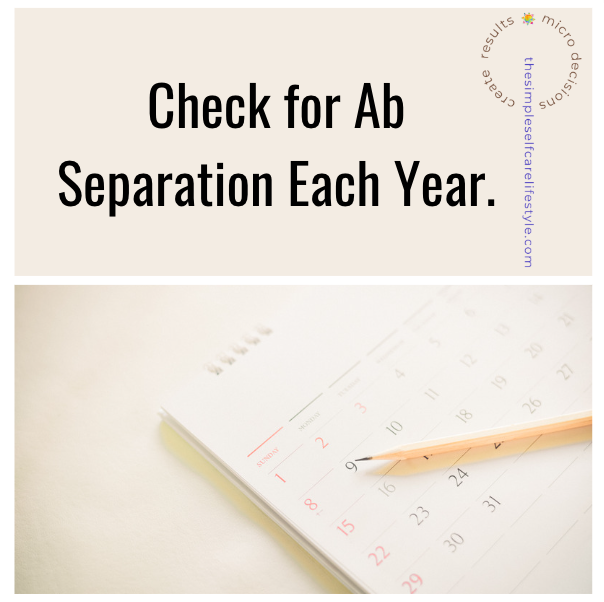
Check Your Abs Each Year
Doing a quick check can help you avoid ramifications an ab separation can create.
I do my check at the beginning of each year to make tracking easy.
As I was doing my check, it got me thinking about writing this post series for you.
AB Separation Tracking Sheet
Here is a tracking sheet I made for you in case you find you have a separation(s).
Writing it down makes it easier to recheck.
Please note: Large separations (over 2.5 finger widths) or doming should really be followed up with your practitioner.
Use the Head to Toe Form
LOG your separation data (finger space for the 4 ab sections) in the HEAD to TOE form using the bottom box that provides space for ‘additional information’. This way, you’ll have easy access to compare your follow-up measurements right in your email! Plus, you’ll see how other body symptoms were positively impacted by documenting how you feel right now going Head to Toe.
Now for the ab separation check.
A SIMPLE AB Separation Check.
Want to watch the instructions on the YouTube video? Scroll to: 02:13
I always began my AB Separation check at the belly button. But you can choose where to check first.
The SIMPLE AB Separation Check: How to Position Yourself
1. Positioned on your back.
2. Bring your heels as close to your buttocks as possible.
Make sure your back is nice and flat.
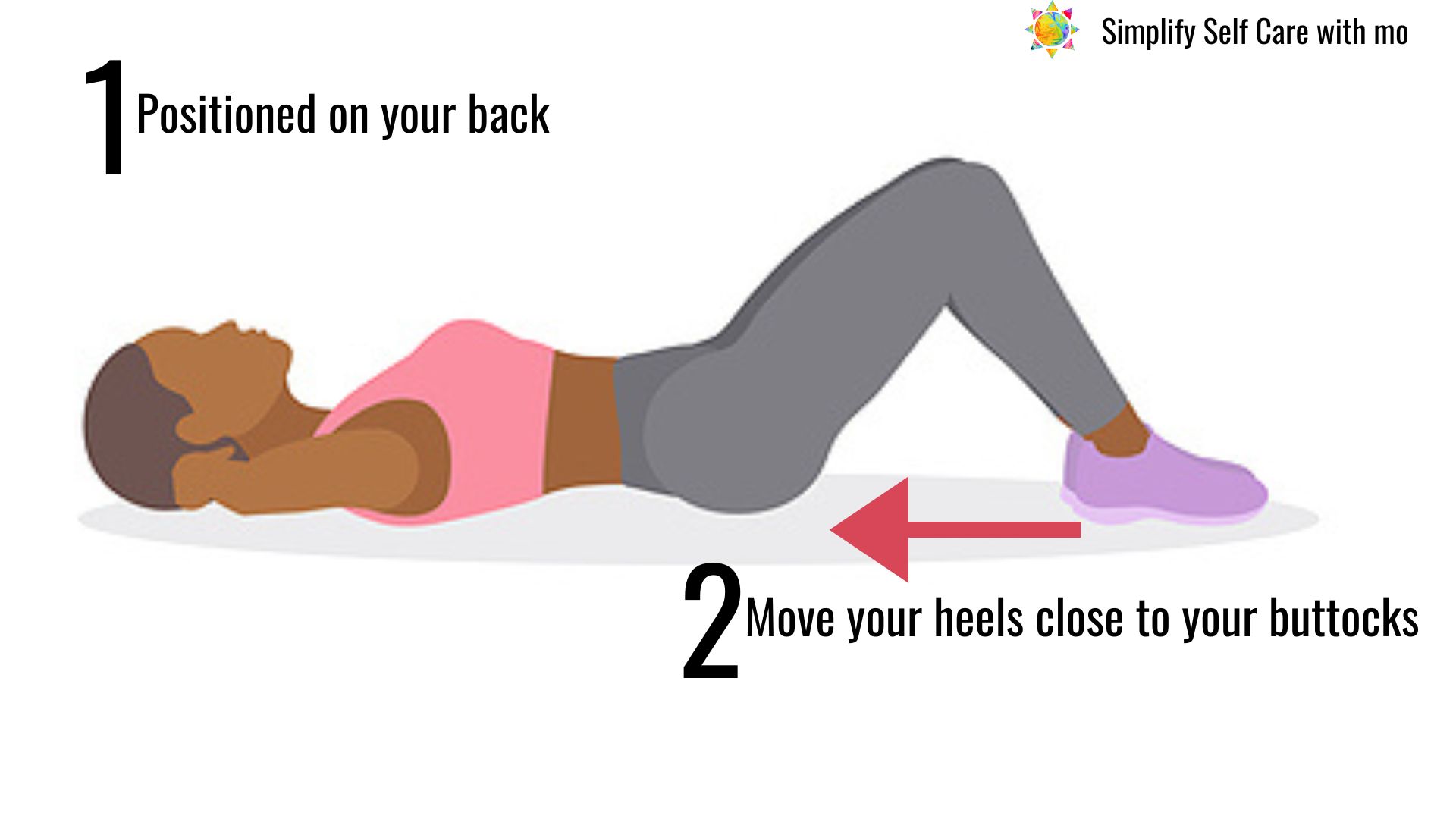
You can place one hand behind your head/neck to support it if that is more comfortable.
Then:
3. Position your other hand
- Fingertips pointing down.
- The palm of your hand is facing your head.
- Lower your fingertips to the spot you will check.
- Apply downward pressure and hold.
NOW
4. Roll your head and a bit of your shoulders upward.
You will be slightly lifting your shoulders off the floor.
As you roll your head and shoulders upward, you are pressing your fingers downward into your abs.
You’ll notice the two sides of your ab muscle come closer together around your fingertips.
As the two sides come together, you may feel a tightening resistance and then a pressing on your fingers upward.
The fingers will pop up upward as the 2 sides close because there is no space!
This tight juncture that presses your fingertips up indicates you do not have a separation in that region.
Roll down and repeat at the next check location, 2 finger widths above or below your belly button.
Once you have gone through each of the areas
- At the belly button
- 2 finger widths above the belly button
- Below the belly button (2 finger widths)
- And 2 finger widths below the chest bone
, and you find there is no gap – GREAT!
- Make a note to recheck next year.
- Jump into using the two exercises and 1 technique we should all be using for protective maintenance.
Here’s What To Do If You Feel A Gap
If two or more fingertips fit between the left and right sides of the muscle:
- mark down the location and then
- how many fingers fit into the separation?
Repeat Checking Each Location.
The locations are the same as above:
- At the belly button
- 2 finger widths above the belly button
- Below the belly button (2 finger widths)
- And 2 finger widths below the chest bone
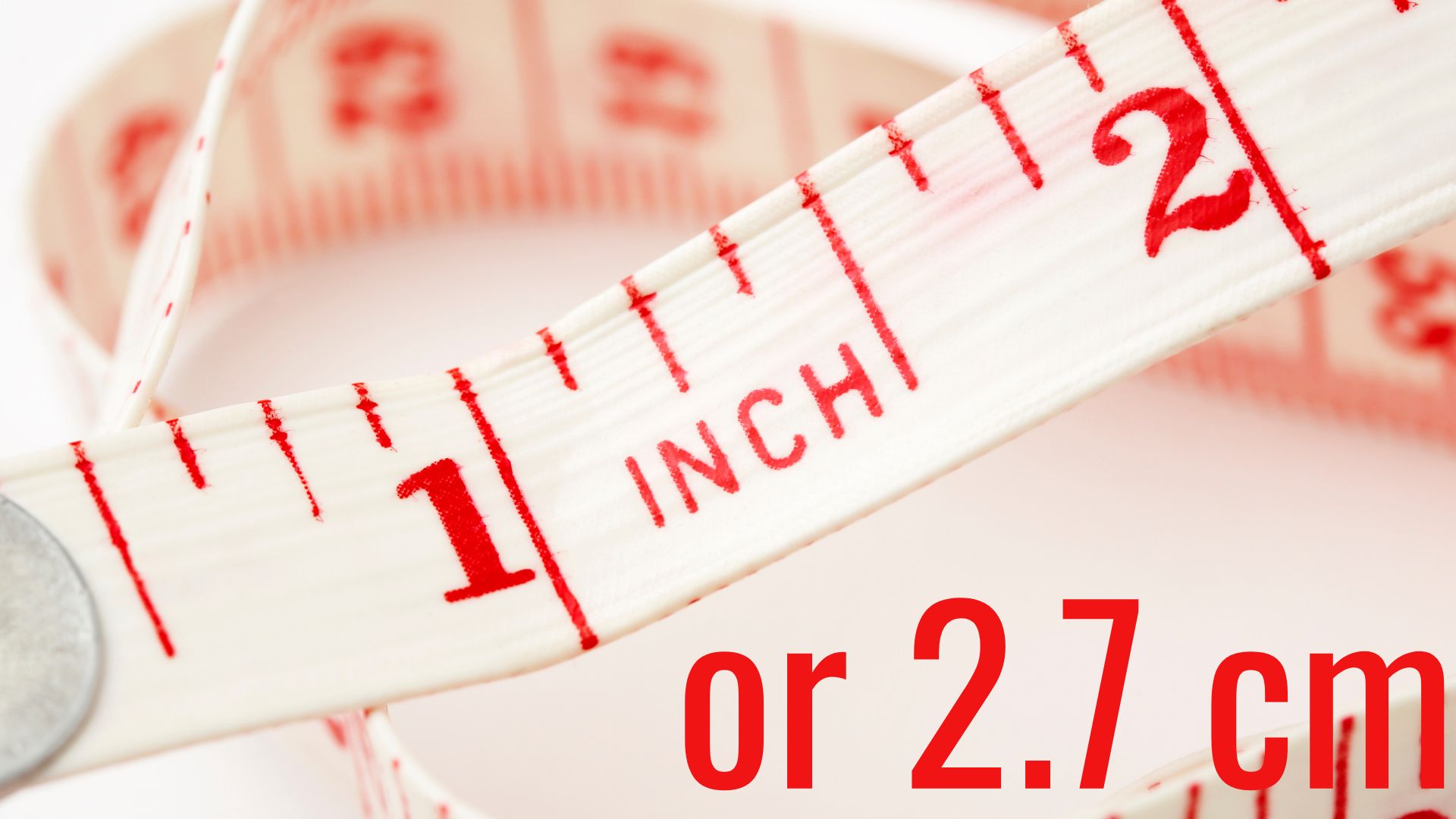
If you feel a gap that is more than two and a half finger-widths or more, make a note of how many fingers fit in. 3, 4 a fist??? Consider sharing your findings with your practitioner.
They are best suited to double-check your abs and guide you.
There is one more Ab Separation I’d like to Share.
Some people with ab separations will see a doming, a bulging up in the gap between the 2 sides.
This bulge poking up and between the two muscles is IMPORTANT.
When there is a doming popping up through the 2 sides, please have your practitioner check your abs before beginning any exercises.
AB Separation with a Dome
Doming on video: Scroll to minute (03:49)
I share with you a ‘wrap’ technique min 04:50 that you can use during exercising.
It helps you safely exercise your abs as you bring them back together.
*First check the separation and the technique with your practitioner.
Your practitioner can help confirm
1. this is ‘doming’.
2. your ab separation is the reason for it.
They are best suited to provide you with individual guidance on how to best approach closing your gap. (There are times when surgery is necessary)
What If you can’t feel your abs due to extra ‘insulation’, it’s not a problem.
Suppose you feel you cannot press down far enough because the ‘insulation’ around your tummy is in the way. No problem!
Jump to the 2 exercises linked below.
The exercises will benefit you. Any separations you may have will improve.
As you notice body signals such as
- – reduced incontinence,
- – less low back or
- – improving joint pain,
- – better posture and mobility.
You can be confident you are closing weakened or separated areas even without testing.
Exercises Focused on Closing & Protecting the Rectus Abdominis Muscle
If your separation measures under an inch or 2.7 cm, it’s a good idea to:
- focus on closing the separation using the 2 exercises that can help ab separations linked below.
- avoid 1 popular ab exercise that can aggravate ab separations
- incorporate a simple technique throughout your day
There you have it!
- What an Ab-separation is
- Who can have one
- Reasons to Check
- When to Check
- HOW to Check and Tracking Sheets.
To Answer MT’s middle request:
“…what should (and shouldn’t) I be doing so I can fix it?”
Here is the link to Post: 2 Exercises for Ab separation (recti diastasis)
Thank you, M.T., Sophia, and everyone sending in questions. It is helpful to know what information you are looking for!


Additional Post Links you may like and Today’s References 👇🏼 below!
THe simple self care lifestyle
Simplify
self care
Post categories

